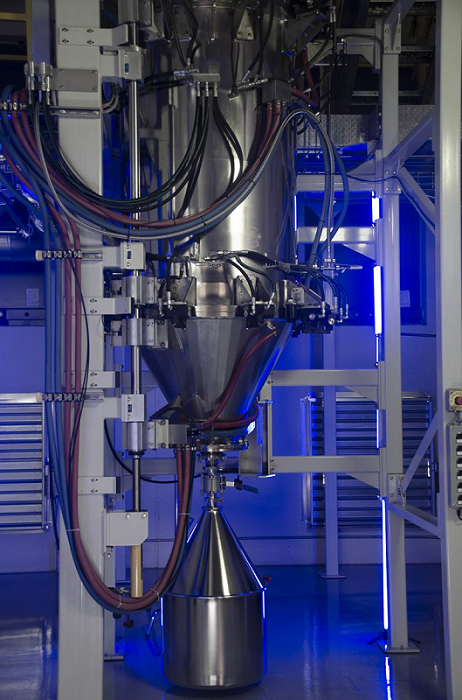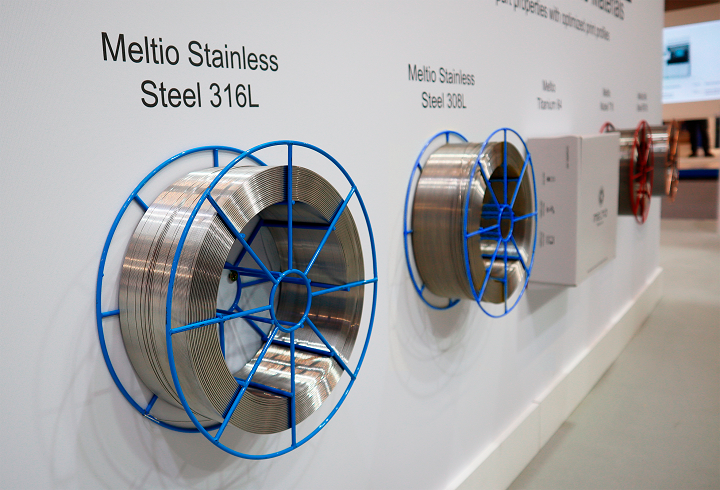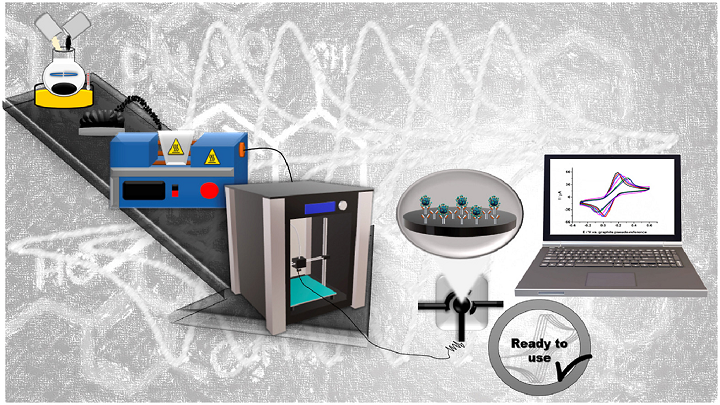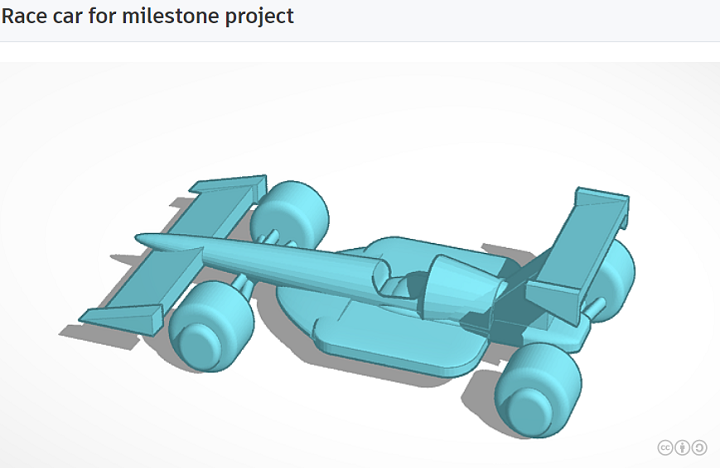We’re talking about business, materials, and education today in 3D Printing News Briefs, as Caracol obtained 9100 certification to produce advanced parts for the aerospace sector and Albemartle and 6K have signed a joint development agreement. voestalpine is using a giant sand 3D printer for steel casting, Meltio launched a range of metal wire materials, and a team of researchers developed a conductive filament that can be used to print electrochemical biosensors for detecting SARS-CoV-2. Finally, MakerBot and the Steam Foundation are working together to expand student access to 3D printing.
Caracol Obtains AS/EN 9100 Certification for Aerospace 3D Printing
First up, Italian company Caracol was certified by SAI Global to use its Robotic Large Scale Additive Manufacturing (RO-LSAM) process to produce parts for the aerospace industry, making it the first company in Italy to receive the globally recognized AS/EN 9100:2018 standard. After a few years of joint research with aerospace OEMs and Tier 1 companies, Caracol has been most recently testing print parameters, new materials, and various features of its RO-LSAM technology, and 3D printed some significant aerospace components last year, like propellant tanks for satellite deployers. The company has also been going through various aerospace OEM product qualification processes, and this ambitious certification is the cherry on top of its hard work.
“This achievement is a key milestone in our proprietary Robotic Large Scale AM system development, we’ve culminated all the research efforts carried out with our aerospace partners over the past few years. With our RO-LSAM process Aerospace OEMs and Tier 1s will be able to produce certified and qualified parts, finally being able to push LSAM into production of large scale tooling and finished parts,” said Francesco De Stefano, Caracol’s CEO and Co-Founder.
Albemarle & 6K to Develop Novel Lithium Battery Materials
Global specialty chemicals company Albemarle Corporation (NYSE: ALB) is a leader in advanced lithium materials, and recently signed a joint development agreement (JDA) with 6K to develop advanced, novel lithium battery materials. Albemarle will sponsor the development of 6K’s patented UniMelt materials production platform, and use it to create these battery materials through 6K’s microwave-controlled plasma technology, which has potentially great benefits for sustainable manufacturing; according to a company press release, a conventional 16-GWh battery cathode production plant would decrease CO2 emissions by 70%, reduce wastewater production by 100%, need a 50% smaller factory footprint, and decrease water consumption by 90% if it was converted to UniMelt.
“Albemarle is developing advanced lithium materials to enable breakthrough levels of lithium-ion battery performance. The UniMelt plasma technology opens new reaction pathways for lithium material innovation,” said Dr. Glen Merfeld, Chief Technical Officer for Albemarle Lithium. “Our collaboration with 6K has significant potential.”
Additionally, Albemarle made an undisclosed investment in 6K through venture capital firm Volta Energy Technologies, which connects strategic investors like Albemarle with quality investment opportunities in energy storage, like 6K.
voestalpine Using Giant Sand 3D Printer for Steel Casting
Austrian steel and technology group voestalpine has begun operating a giant sand 3D printer from Chinese manufacturing company Kocel Machinery to make heavy steel castings. Kocel and voestalpine have been working together for several years, after the Austrian company expanded its special steel activities in the Chinese market in 2014. voestalpine Gießerei, a Traisen-based subsidiary in the group’s Steel Division, has installed the large Foundry Sand 3D Printer-AJS 2500A/2600A at its new sand 3D printing competence center, with a second system to come this spring. The printer has a resin binder recovery system to keep consumption low and enable the use of new, reused, and reclaimed silica sand, which makes it a more sustainable and environmentally friendly process than casting; additionally, it enables molds to be manufactured more quickly, with more near net-shaped contours, and majorly reduces final in-house processing.
“We are European pioneers in the use of 3D sand printing technology in steel casting, allowing us to offer our customers even more customized solutions of greater design complexity,” said Hubert Zajicek, a Member of the Management Board of voestalpine AG, and Head of the Steel Division, which is based in Linz. “This not only opens up new business areas for the future, but also creates new opportunities for our employees to work in an innovative environment at our established site in Traisen.”
Meltio Launches Metal Wire Materials Range
Laser metal deposition (LMD) manufacturing company Meltio announced that it has launched its own range of metal wire materials for LMD 3D printing, which were tested under controlled conditions with out-of-the-box optimized printing parameters and validated properties. The first welding wire format materials in the range include Titanium 64, Stainless Steel 308L and Stainless Steel 316L, Nickel 718, and Mild Steel ER70S. Meltio says that materials such as aluminum, copper, and refractories are still under development.
Additionally, the company will be maintaining its open materials platform options, in order to show how important of a factor materials are in the 3D printing user experience. Its wire LMD technology is compatible with most stainless steels, mild steels, nickel alloys, tool steels, and titanium alloys, in addition to third-party commodity welding wire. Plus, precious metals and cobalt chrome alloys have shown promising results in customer-led projects. Because Meltio is keeping its open platform, and launching this new metal materials range, users can benefit from both experimentation and optimized print profiles.
Conductive Filament for Detecting SARS-CoV-2
A team of Brazilian researchers from Federal University of São Carlos, Federal University of Uberlândia, and University of São Paulo published a research paper about their work developing a conductive, ready-to-use, graphite-PLA filament that can be used to 3D print electrochemical biosensors that could potentially be used to detect SARS-CoV-2, or COVID-19. They came up with a simple protocol for producing and characterizing this new filament for FDM 3D printing, which contains graphite within a PLA polymer matrix and can be used to print electrochemical biosensors that don’t require any surface activation. To demonstrate their material, the team created an immunosensor for diagnosing COVID-19.
“The proposed method for producing the conductive filament consists of four steps: (i) mixing graphite and PLA in a heated reflux system; (ii) recrystallization of the composite; (iii) drying and; (iv) extrusion. The produced filament was used for the manufacture of electrochemical 3D printed sensors. The filament and sensor were characterized by physicochemical techniques, such as SEM, TGA, Raman, FTIR as well as electrochemical techniques (EIS and CV). Finally, as a proof-of-concept, the fabricated 3D-printed sensor was applied for the determination of uric acid and dopamine in synthetic urine and used as a platform for the development of a biosensor for the detection of SARS-CoV-2. The developed sensors, without pre-treatment, provided linear ranges of 0.5-150.0 and 5.0-50.0 μmol L-1, with low LOD values (0.07 and 0.11 μmol L-1), for uric acid and dopamine, respectively. The developed biosensor successfully detected SARS-CoV-2 S protein, with a linear range from 5.0 to 75.0 nmol L-1 (0.38 μg mL-1 to 5.74 μg mL-1) and LOD of 1.36 nmol L-1 (0.10 μg mL-1) and sensitivity of 0.17 μA nmol-1 L (0.01 μA μg-1 mL). Therefore, the lab-made produced and the ready-to-use conductive filament is promising and can become an alternative route for the production of different 3D electrochemical (bio)sensors and other types of conductive devices by 3D printing.”
Steam Foundation & MakerBot Expanding Student 3D Printing Access
Finally, student-run nonprofit The Steam Foundation and MakerBot have partnered to make 3D printing more accessible to students across the US. The California-based organization, founded by high school juniors Aadhav Prabu and Akshar Raikanti, wants to bring STEAM education to students in all grades, and offers free workshops that teach topics like coding, robotics, and 3D printing. MakerBot, which has long been committed to education, wanted to support the Foundation’s programs and mission and donated 3D printers and materials. Last year, the Foundation offered a virtual, 10-week 3D printing camp platform from which students could learn, interact, and create projects together. Students from 13 states learned about different 3D printing technologies, design and CAD software, materials, and more; then, they sent their final designs for a simple machine with moving parts to the instructor, who printed them on a MakerBot Replicator+ and mailed them to the students.
“We’re excited to expand our program and work with some of our past students as instructors,” Prabu said. “The goal is that, by the end of the 10 weeks, we’ve given them a toolkit with all the basic things that they would need to go further with 3D printing. Our hopes are that they can use that toolkit to really build great and advanced projects moving forward. That way, we can continue to inspire more students to get into STEAM education and get more experience with 3D printing specifically.”
Subscribe to Our Email Newsletter
Stay up-to-date on all the latest news from the 3D printing industry and receive information and offers from third party vendors.
You May Also Like
Profiling a Construction 3D Printing Pioneer: US Army Corps of Engineers’ Megan Kreiger
The world of construction 3D printing is still so new that the true experts can probably be counted on two hands. Among them is Megan Kreiger, Portfolio Manager of Additive...
US Army Corps of Engineers Taps Lincoln Electric & Eaton for Largest 3D Printed US Civil Works Part
The Soo Locks sit on the US-Canadian border, enabling maritime travel between Lake Superior and Lake Huron, from which ships can reach the rest of the Great Lakes. Crafts carrying...
Construction 3D Printing CEO Reflects on Being Female in Construction
Natalie Wadley, CEO of ChangeMaker3D, could hear the words of her daughter sitting next to her resounding in her head. “Mum, MUM, you’ve won!” Wadley had just won the prestigious...
1Print to Commercialize 3D Printed Coastal Resilience Solutions
1Print, a company that specializes in deploying additive construction (AC) for infrastructure projects, has entered an agreement with the University of Miami (UM) to accelerate commercialization of the SEAHIVE shoreline...



































